Leather soles are an increasingly popular choice of sole material for shoes due to their luxurious feel and look. But how slippery are they? Can you be sure that your feet won’t slip when walking around on leather-soled shoes?
In this article, we’ll explore the question of whether leather soles are slippery or not. We’ll look at the factors that affect this, how you can make sure your shoes won’t slip, and some tips for choosing the right sole material. Let’s get started!
Quick Myth Busting: Are Leather Soles Slippery?
The answer to this question is not a simple yes or no. The truth is that it depends on several factors, such as the type of leather, the finish on the leather and how it is treated.
Generally speaking, leather soles are not as slippery as rubber or synthetic materials. This is because they provide more grip than those other materials do. However, if you do have leather-soled shoes that seem to be slipping, there are a few things you can do to make sure they don’t.
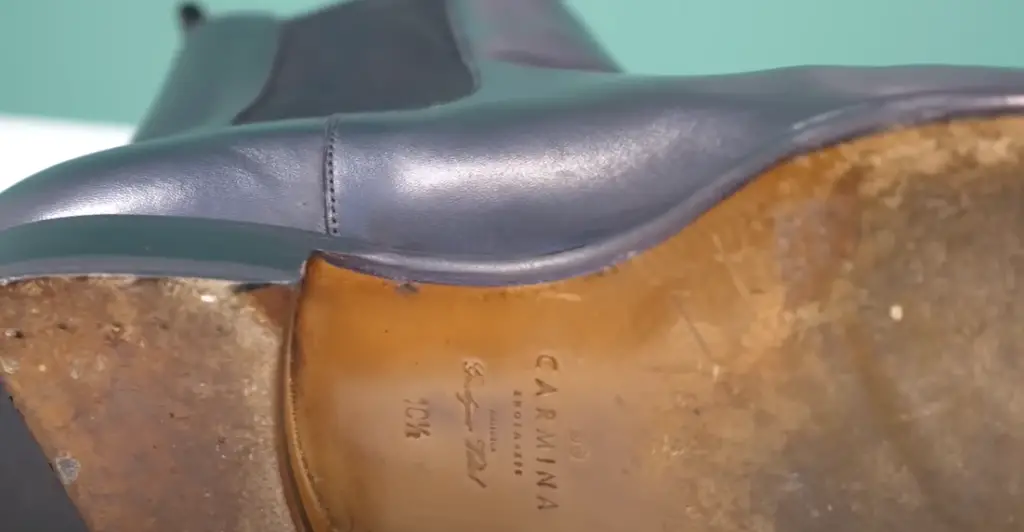
Factors That Affect Slipperiness of Leather Soles
Several factors affect the slipperiness of leather soles, such as the type of leather and how it is treated. Some types of leather are naturally more slippery than others. For example, calfskin leather is often used for dress shoes and is quite slippery. On the other hand, cowhide leather is thicker and more durable, making it less likely to be slippery.
Finally, how the leather is treated can also affect its slipperiness. Generally speaking, shoes with a leather sole that has been well-treated and conditioned will be less slippery than those that have not been treated at all. [1]
How to Make Leather Soles Less Slippery
If you have leather soles that are too slippery, there is still hope! You can make them less slippery with a few simple steps.
First, you should make sure the sole is clean and dry. This will help reduce any dirt or dust that might be contributing to the slipperiness.
Second, you can apply a leather conditioner or waterproofing agent to your shoes. This will help to reduce the slipperiness of the sole, as well as protect it from wear and tear.
Finally, you can also use a non-slip rubber mat or adhesive strips on the bottom of your leather soles. This is an easy way to add some extra grip and traction to your shoes.
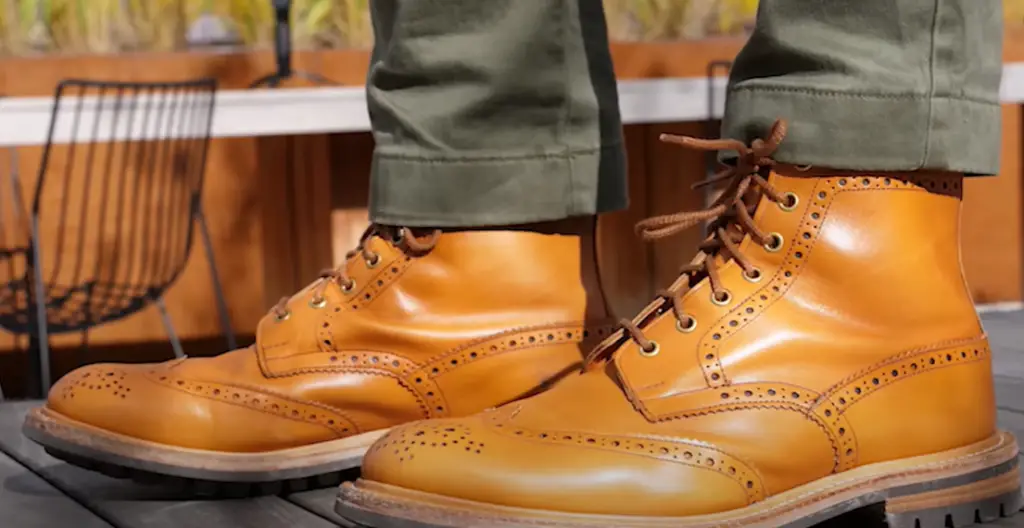
Tips for Choosing the Right Sole Material
When choosing a sole material for your shoes, it’s important to consider how slippery it is. You should also consider the type of activities you plan on doing with your shoes and make sure to choose a sole material that won’t slip when walking or running.
For example, if you plan on going hiking in your shoes, you might want to choose a sole material that provides better grip and traction. On the other hand, if you plan on wearing them for special occasions or dressy events, you may want to opt for leather soles.
Overall, it’s important to remember that leather soles can be slippery but they don’t have to be! With some simple steps, you can make sure your shoes don’t slip and keep them looking great.
So, if you’re looking for a luxurious and stylish sole material for your shoes, leather is certainly an excellent option. Just make sure to consider the slipperiness factor before making your purchase and take the necessary steps to make sure it doesn’t slip. With the right care and maintenance, you can be sure to enjoy your leather-soled shoes for many years to come! [2]
Benefits of Wearing Leather Soles
Aside from their luxurious look and feel, leather soles also provide many other benefits. They are typically more durable than synthetics or rubber materials, making them last longer. They also provide better breathability, which is important for keeping your feet cool and comfortable in hot weather.
In addition, leather soles often have better grip and traction than synthetic materials, making them ideal for outdoor activities. And lastly, leather soles can also provide better shock absorption, which is key for protecting your feet during long walks or runs.
Drawbacks of Wearing Leather Soles
Like any other material, leather soles can also have some drawbacks. As we mentioned earlier, they can be slippery if not correctly treated and maintained. In addition, they may require more care than synthetic materials in order to last longer.
They are also generally more expensive than other sole materials. So, if you’re looking for a budget-friendly option, leather soles may not be the best choice. [3]
How to Care for Leather Soles
Proper care and maintenance are key to making sure your leather soles last as long as possible. Here are some tips for keeping them in top condition:
- Make sure to clean them regularly with a soft cloth and warm water.
- Apply a leather conditioner or wax after cleaning, as this can help protect the material from wear and tear.
- Avoid wearing them in wet or muddy conditions, as this can lead to fast deterioration of the soles.
- Store your leather soles in a cool, dry place when not in use. This will help ensure they stay in good condition for longer. [4]
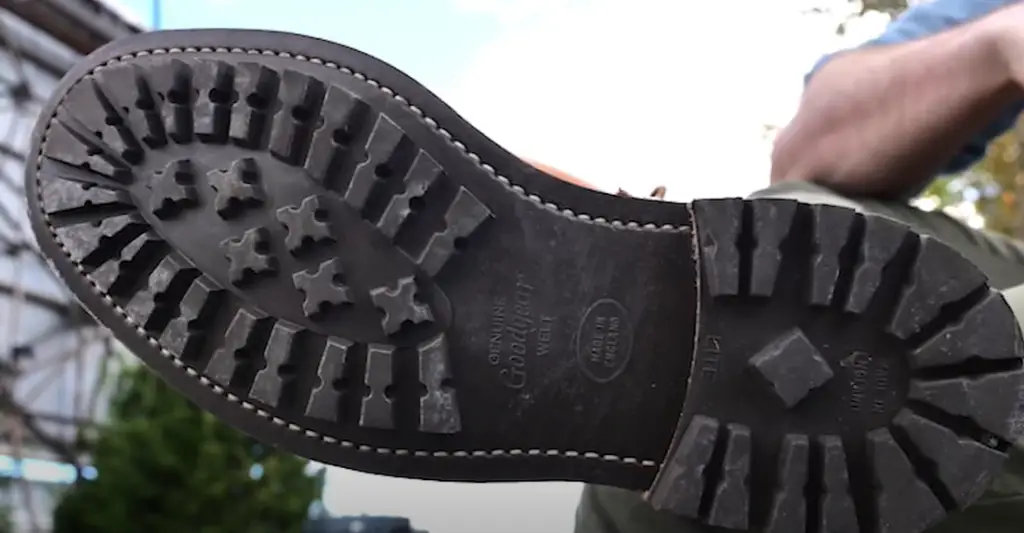
Alternatives to Leather Soles
If you’re looking for an alternative to leather soles, there are some great options out there. Synthetic materials such as rubber and PU offer good grip and traction without the need for regular maintenance. They are also often more affordable than leather, making them a cost-effective option.
Overall, there are many materials available that can provide the grip and traction you need without sacrificing style or comfort. Take some time to do your research before making your purchase and choose the material that best suits your needs.
No matter which type of sole you choose, it’s important to take good care of them in order to get the most out of your shoes. With some regular maintenance and the right cleaning products, you can make sure your leather or synthetic soles last for years to come!
Do Leather Soles Absorb Water?
Leather is a natural material and, as such, it does have the ability to absorb water. However, this process can take some time. Generally speaking, leather soles will not absorb water instantly when exposed to it.
Also, the type of leather used and how it has been treated can affect its water-absorption rate. For example, untreated leather can absorb water more quickly than treated leather.
To minimize the absorption of water by your leather soles, it’s important to make sure they are properly conditioned and waterproofed. This will help create a barrier against water and other liquids, thus reducing the amount of absorption by the leather. Additionally, you should also avoid wearing them in wet conditions, as this can cause the leather to absorb more water.
Overall, if you take proper care of your leather soles and make sure they are waterproofed, you won’t have to worry about them absorbing too much water. This will help ensure your shoes last longer and keep them looking great for many years to come! [5]
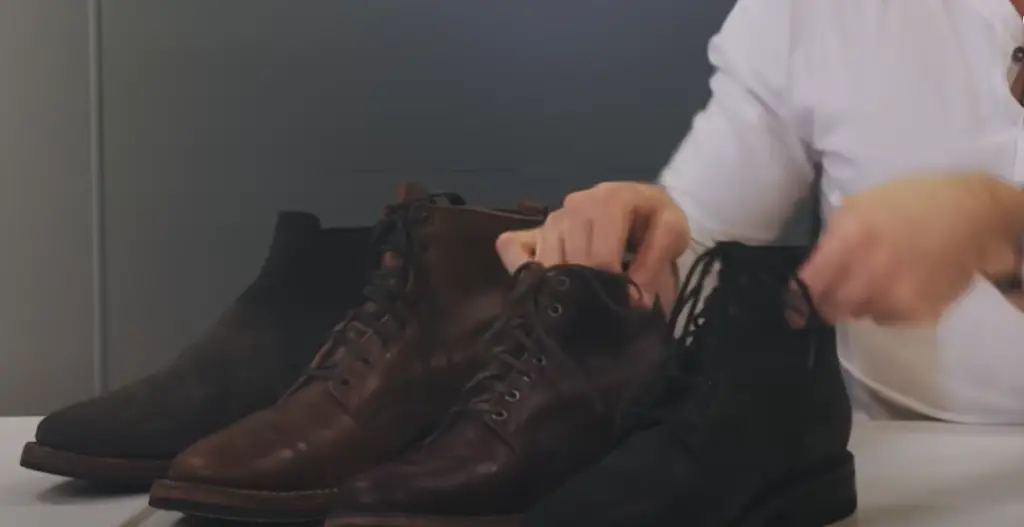
FAQs
Is leather slippery?
Leather can be slippery if not properly treated or maintained. To reduce the slipperiness, make sure to clean your shoes regularly and apply a leather conditioner or waterproofing agent. You can also put non-slip rubber mats or adhesive strips on the bottom of your leather soles for extra grip and traction.
What is the best sole material for shoes?
The best sole material for shoes depends on a number of factors, such as your lifestyle and the activities you plan on doing with them. Leather is often considered to be the most luxurious option and provides good grip and traction when properly treated and maintained. However, synthetic materials such as rubber and PU can also provide good grip without the need for regular maintenance. Cork is also becoming increasingly popular due to its lightweight and durable nature.
How do I clean leather soles?
To clean leather soles, start by wiping them down with a soft cloth and warm water. Once they are dry, you can then apply a leather conditioner or wax to help protect the material from wear and tear. Make sure to avoid using harsh chemicals, such as bleach or detergent, when cleaning leather soles.
What are the benefits of wearing leather soles?
Leather soles offer many benefits, such as durability, breathability, better grip and traction, and shock absorption. They also provide a luxurious look and feel that is perfect for dressy occasions or events. With proper care and maintenance, leather soles can last for years to come!
What are the drawbacks of wearing leather soles?
The main drawback of leather soles is that they can be slippery if not properly treated and maintained. In addition, they may require more care than synthetic materials in order to last longer. They are also generally more expensive than other sole materials.
Are leather soles worth it?
Yes! Leather soles offer a luxurious look and feel, as well as great durability and breathability. With proper care and maintenance, they can last for years to come. If you’re looking for a shoe with a bit of extra style and quality, leather soles are definitely worth the investment.
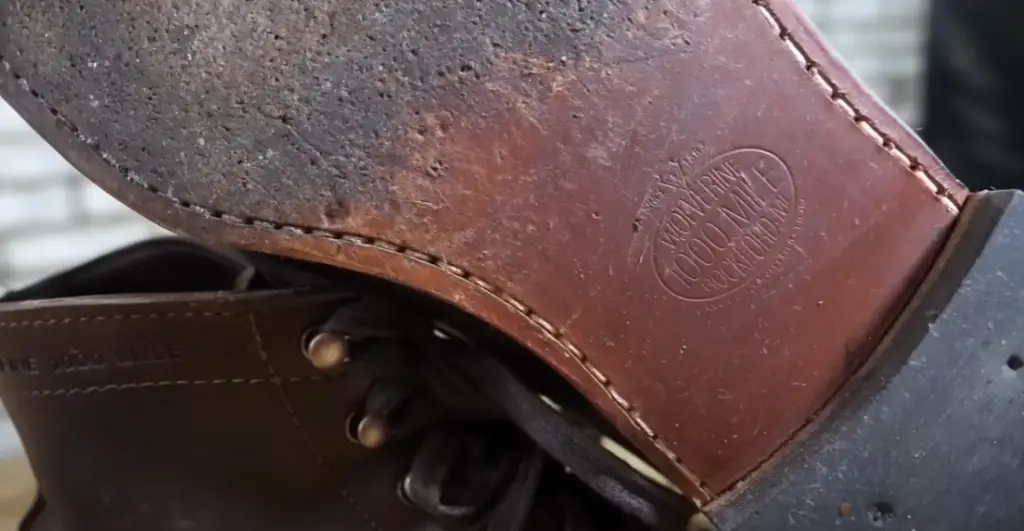
Are there any alternatives to leather soles?
Yes! There are many alternatives to leather soles, such as synthetic materials like rubber and PU. They offer good grip and traction without the need for regular maintenance. Cork is also becoming increasingly popular due to its lightweight and durable nature. Take some time to do your research before making your purchase and choose the material that best suits your needs.
How do I make sure my leather soles last?
Proper care and maintenance are key to making sure your leather soles last as long as possible. Make sure to clean them regularly with a soft cloth and warm water, and apply a leather conditioner or wax after cleaning. Avoid wearing them in wet or muddy conditions
How long do leather soles last?
With proper care and maintenance, leather soles can last for many years. However, it’s important to remember that they may require more care than synthetic materials in order to stay in top condition.
Is it worth investing in leather soles?
Yes, investing in leather soles is definitely worth it if you’re looking for shoes with a bit of extra style and quality. You’ll get great durability and breathability, as well as better grip and traction when properly treated and maintained. Plus, they provide a luxurious look and feel that is perfect for dressy occasions or events.
Are leather soles more expensive than other sole materials?
Yes, leather soles tend to be more expensive than other sole materials. However, with proper care and maintenance they can last for many years and provide great durability and breathability. Plus, you’ll get the added bonus of a luxurious look and feel that synthetic materials just can’t match.
Do leather soles provide good grip and traction?
Yes, leather soles can provide good grip and traction when properly treated and maintained. To reduce the slipperiness, make sure to clean your shoes regularly and apply a leather conditioner or waterproofing agent. You can also put non-slip rubber mats or adhesive strips on the bottom of your leather soles for extra grip and traction.
What is the best way to store my leather soles when not in use?
When not in use, make sure to store your leather soles in a cool, dry place. Avoid exposing them to direct sunlight or extreme temperatures, as this can damage the material. It’s also important to ensure that they are completely dry before storing them away, as dampness can cause mould and mildew growth which can ruin the leather. Additionally, you should also use a shoe tree or cedar block to help maintain the shape and keep them in top condition.
Will leather soles stretch over time?
Yes, leather soles can tend to stretch over time. To prevent this from happening, make sure to rotate your shoes when not wearing them. Additionally, you should also apply a leather conditioner or waterproofing agent to help keep the material supple and prevent it from becoming stretched out.
What materials are best for wet or cold weather?
Synthetic materials, such as rubber and PU, are best suited for wet or cold weather due to their water-resistant nature. Additionally, cork is also becoming increasingly popular due to its lightweight and durable nature. However, if you prefer the look of leather, make sure to apply a waterproofing agent or wax before wearing them in wet or cold conditions.
Are there any tips for walking on slippery surfaces?
Yes! Make sure to wear shoes with good grip and traction such as rubber soles or those made with leather. Additionally, you can also put non-slip adhesive strips on the bottom of your shoes for extra traction. It’s also important to take short steps and move slowly when walking on slippery surfaces, as a sudden movement could cause you to lose your balance or worse.
Is it necessary to apply a conditioner or wax to my leather soles?
Yes! Applying a leather conditioner or wax to your leather soles helps keep them in top condition and prevents the material from drying out. It also helps reduce slippage by providing extra grip and traction. Make sure to apply a coating of conditioner or wax every few months in order to keep your shoes looking good and performing well.
Will leather soles get ruined if I wear them in the rain?
No, leather soles should not be ruined if you wear them in the rain. However, it’s important to apply a waterproofing agent or wax before wearing them in wet weather in order to prevent the material from becoming damaged or waterlogged. Additionally, make sure to clean and dry your shoes after every use in order to keep them in top condition.
Is there a way to make leather soles more slip-resistant?
Yes! The best way to make leather soles more slip-resistant is to apply a coating of leather conditioner or wax. This will help reduce slippage by providing extra grip and traction. Additionally, you can also put non-slip rubber mats or adhesive strips on the bottom of your leather soles for extra stability and traction.
Which type of sole material is best for shock absorption?
Cork is one of the best materials for shock absorption due to its lightweight and durable nature. Additionally, rubber and PU are also great choices as they offer good grip and traction without the need for regular maintenance. If you’re looking for a more luxurious option, leather is also an excellent choice but requires proper care and maintenance in order to last longer.
What is the difference between leather and synthetic sole materials?
The main difference between leather and synthetic sole materials is that leather provides a luxurious look and feel, while synthetics are more affordable but lack the same level of sophistication. Leather also requires more care and maintenance in order to stay in top condition, while synthetic materials tend to be more durable and require less upkeep.
Useful Video: Leather soles are slippery
Conclusion
Leather soles are a great investment for shoes that need a bit of extra style and quality. They provide excellent durability, breathability, grip and traction when properly treated and maintained. Plus, they offer a luxurious look and feel that is perfect for dressy occasions or events. However, make sure to apply a leather conditioner or wax regularly in order to prevent the material from drying out and maintain its slip-resistance. With proper care and maintenance, your leather soles can last for many years and provide great value and performance.
References:
- https://footfitter.com/blogs/blog/how-to-add-traction-to-slippery-leather-soles
- https://stridewise.com/pros-cons-leather-soles/
- https://samtalksstyle.com/2022/03/01/the-pros-and-cons-of-leather-shoe-soles/
- https://www.badgerandblade.com/forum/threads/what-to-do-about-slippery-leather-soles.406744/
- https://www.beckettsimonon.com/blogs/resources/whats-special-about-leather-soles

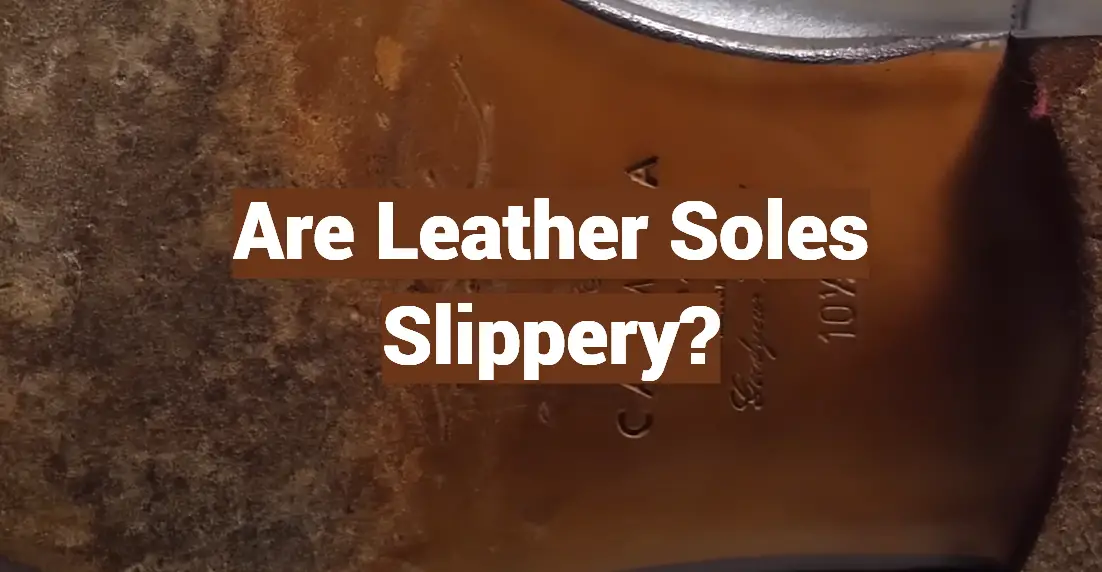
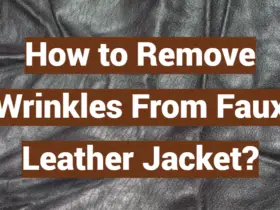




Leave a Reply